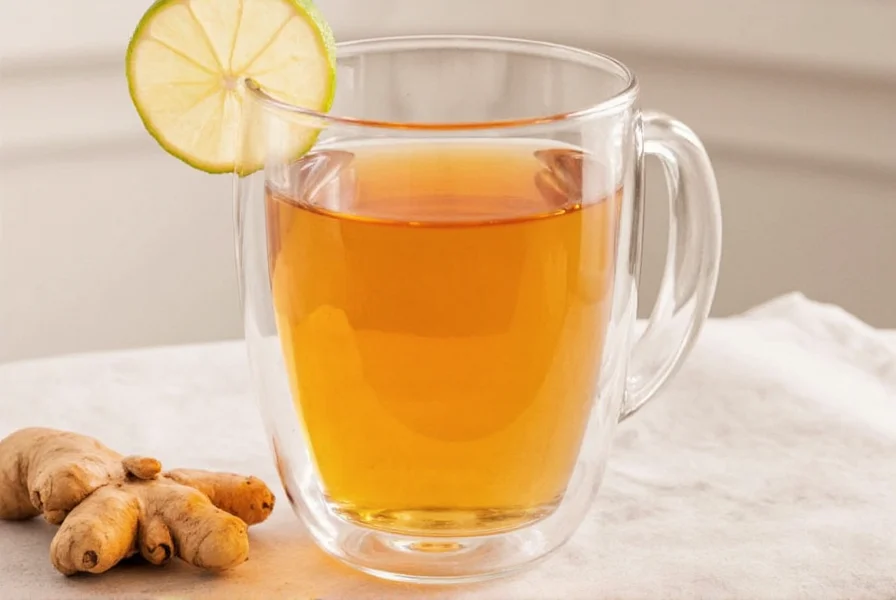Menstrual discomfort affects millions of women worldwide, prompting many to seek natural relief options. Ginger tea has emerged as a popular remedy, but what does science actually say about ginger tea and menstruation? This article examines the research behind this traditional practice to help you make informed decisions about menstrual pain management.
The Science Behind Ginger and Menstrual Relief
Ginger (Zingiber officinale) contains bioactive compounds like gingerols and shogaols that possess anti-inflammatory and analgesic properties. These compounds may help reduce prostaglandin production—the hormone-like substances responsible for uterine contractions and menstrual pain. Unlike NSAIDs that block prostaglandin synthesis entirely, ginger appears to modulate this process more gently.
A comprehensive 2020 review published in Complementary Therapies in Medicine analyzed 11 clinical trials involving 1,278 participants. Researchers concluded that ginger supplementation significantly reduced menstrual pain intensity compared to placebo, with effects becoming noticeable within the first 24 hours of menstruation.

What Research Says About Ginger Tea for Period Pain
While most studies use standardized ginger powder rather than tea, the evidence remains relevant since tea extracts the same active compounds. Key findings include:
- A randomized controlled trial in Pain Management Nursing found 750mg of ginger daily reduced pain severity by 36% compared to 18% in the placebo group
- Research in Journal of Alternative and Complementary Medicine showed ginger (250mg four times daily) was as effective as mefenamic acid (an NSAID) for pain relief
- Studies typically report benefits when ginger is started 1-3 days before menstruation begins and continued for the first 3-5 days of bleeding
It's important to note that ginger tea for menstrual pain relief doesn't work for everyone. Individual responses vary based on metabolism, pain severity, and ginger concentration in the tea. Commercial ginger teas contain varying amounts of active compounds—typically less concentrated than the powdered ginger used in studies.
Practical Guidance for Using Ginger Tea During Menstruation
Based on current evidence, here's how to effectively incorporate ginger tea into your menstrual care routine:
| Timing | Preparation Method | Expected Benefits |
|---|---|---|
| 1-3 days before period starts | 1-2 cups daily of strong ginger tea (simmer 1" fresh ginger 10-15 mins) | May reduce initial pain severity |
| First 24-72 hours of menstruation | 3-4 cups daily, consumed at regular intervals | Maximum pain reduction effect |
| Throughout menstrual period | Maintenance dose of 1-2 cups daily | Sustained symptom management |
For how much ginger tea for period pain is optimal, most research suggests consuming the equivalent of 750-2000mg of ginger daily. This typically translates to 2-4 cups of properly brewed tea. To maximize potency, use fresh ginger root rather than pre-packaged tea bags when possible, and simmer rather than steep.
Safety Considerations and Potential Side Effects
Ginger tea is generally safe for most women during menstruation, but certain precautions apply:
- Bleeding disorders: Ginger may increase bleeding risk. Avoid if you have hemophilia or other clotting disorders
- Medication interactions: Consult your doctor if taking blood thinners (warfarin, aspirin), diabetes medications, or high blood pressure drugs
- Pregnancy: Avoid therapeutic doses during pregnancy as ginger may stimulate uterine contractions
- Digestive sensitivity: Some women experience heartburn or stomach upset—reduce dosage if this occurs
Unlike NSAIDs, ginger tea doesn't carry risks of stomach ulcers or kidney damage, making it a potentially safer option for women who cannot tolerate conventional pain medications. However, it's crucial to understand that ginger tea vs ibuprofen for menstrual cramps represents complementary rather than replacement therapy for many women with severe pain.

Integrating Ginger Tea with Other Menstrual Relief Strategies
For comprehensive menstrual care, consider combining ginger tea with other evidence-based approaches:
- Heat therapy: Apply heating pads to lower abdomen while drinking ginger tea
- Exercise: Gentle movement enhances ginger's pain-relieving effects
- Dietary support: Pair with magnesium-rich foods like dark leafy greens
- Stress management: Combine with breathing exercises for amplified benefits
Remember that natural remedies for period pain with ginger work best as part of a holistic approach. If menstrual pain significantly disrupts your daily life, consult a healthcare provider to rule out conditions like endometriosis or adenomyosis.
Conclusion: Managing Expectations with Ginger Tea
Current research supports ginger tea as a potentially valuable tool for managing menstrual discomfort, particularly for mild to moderate period cramps. While not a miracle cure, it offers a relatively safe, accessible option that works for many women. The key to success lies in proper timing, adequate dosage, and realistic expectations about its effects.
As with any natural remedy, individual results vary. Track your symptoms and ginger tea consumption to determine your personal response. For women seeking scientific evidence ginger tea menstruation benefits, the existing research provides promising—but not definitive—support for its use as part of a comprehensive menstrual care strategy.
How quickly does ginger tea work for period cramps?
Most women notice reduced pain within 24-48 hours of consistent consumption. For best results, start drinking ginger tea 1-3 days before your period begins. Clinical studies show maximum pain reduction typically occurs during the first 72 hours of menstruation when ginger is consumed regularly.
Can I drink too much ginger tea during my period?
Yes, excessive consumption (more than 4 grams of ginger daily) may cause heartburn, diarrhea, or mouth irritation. Stick to 2-4 cups of properly brewed tea daily during menstruation. If you experience digestive discomfort, reduce your intake. Those with gallstones should consult a doctor before regular ginger consumption.
Is fresh ginger tea more effective than store-bought tea bags for menstrual pain?
Fresh ginger tea generally contains higher concentrations of active compounds. Studies showing significant pain reduction typically use 750-2000mg of ginger powder daily, which is difficult to achieve with commercial tea bags. For therapeutic effects, simmer 1 inch of fresh ginger root for 10-15 minutes to maximize potency compared to standard steeping of tea bags.
Can ginger tea help with heavy menstrual bleeding?
Research specifically on ginger tea and menstrual flow is limited. While ginger may help reduce pain associated with heavy periods, it doesn't appear to significantly reduce blood loss. Women with abnormally heavy bleeding (menorrhagia) should consult a healthcare provider rather than relying solely on ginger tea, as heavy bleeding can indicate underlying conditions requiring medical attention.
When should I start drinking ginger tea before my period?
For optimal results, begin drinking ginger tea 1-3 days before your expected period start date. This timing allows ginger's anti-inflammatory compounds to build up in your system before prostaglandin levels rise significantly. Continue consumption throughout the first 3-5 days of menstruation when pain is typically most intense.











 浙公网安备
33010002000092号
浙公网安备
33010002000092号 浙B2-20120091-4
浙B2-20120091-4